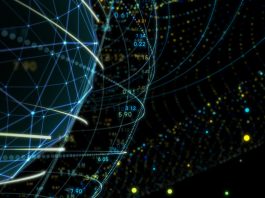A new algorithm developed by researchers at the University of Tokyo enables efficient and accurate verification of quantum devices.
Technologies that utilise quantum mechanical behaviours – such as devices that use quantum information as input and output data – are likely to have more mainstream applications in the near future.
These quantum devices necessitate careful verification as a result of inherent uncertainties. This is because the verification process proves more difficult if the device is time dependent when the output depends on past inputs.
Verifying time-dependent quantum devices
Now, for the first time, researchers have used machine learning to significantly enhance the efficiency of verification for time-dependent quantum devices by integrating a certain memory effect present in these systems.
While quantum computers are of significant interest to the scientific community, these fascinating machines are still in their infancy. However, a quantum internet may be more realisable. This would provide important security advantages over the current internet. However, this would rely on technologies that are currently not used outside of a lab setting.
While many tenets of the devices that can build our quantum internet may have been worked out, there are many engineering challenges that need to be considered in order to recognise these as products. However, there is a lot of research underway to develop tools for the design of quantum devices.
Postdoctoral researcher Quoc Hoan Tran and Associate Professor Kohei Nakajima from the Graduate School of Information Science and Technology at the University of Tokyo have established such a tool, which they believe could make verifying the behaviour of quantum devices a more effective and accurate undertaking than it is at present.
Machine learning tool
The tool they have developed is an algorithm that can restructure the workings of a time-dependent quantum device by studying the relationship between the quantum inputs and outputs. This method is commonplace when investigating a classical physical system, but quantum information is more difficult to store, which usually makes it impossible.
“The technique to describe a quantum system based on its inputs and outputs is called quantum process tomography,” explained Tran. “However, many researchers now report that their quantum systems exhibit some kind of memory effect where present states are affected by previous ones. This means that a simple inspection of input and output states cannot describe the time-dependent nature of the system. You could model the system repeatedly after every change in time, but this would be extremely computationally inefficient. Our aim was to embrace this memory effect and use it to our advantage rather than use brute force to overcome it.”
Tran and Nakajima turned to machine learning and a method known as quantum reservoir computing to develop their novel algorithm. This learns patterns of inputs and outputs that change over time in a quantum system and efficiently predicts how these patterns will change, even in situations the algorithm has not yet witnessed.
As it does not need to know the inner workings of a quantum system as a more empirical method might, but only the inputs and outputs, the researchers’ algorithm can be simpler and generate results faster as well.
“At present, our algorithm can emulate a certain kind of quantum system, but hypothetical devices may vary widely in their processing ability and have different memory effects. So the next stage of research will be to broaden the capabilities of our algorithms, essentially making something more general purpose and thus more useful,” added Tran. “I am excited by what quantum machine learning methods could do, by the hypothetical devices they might lead to.”









